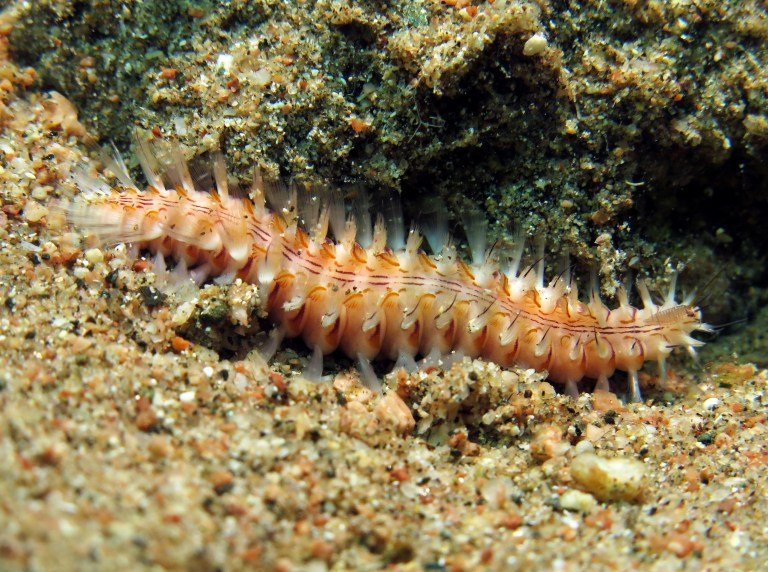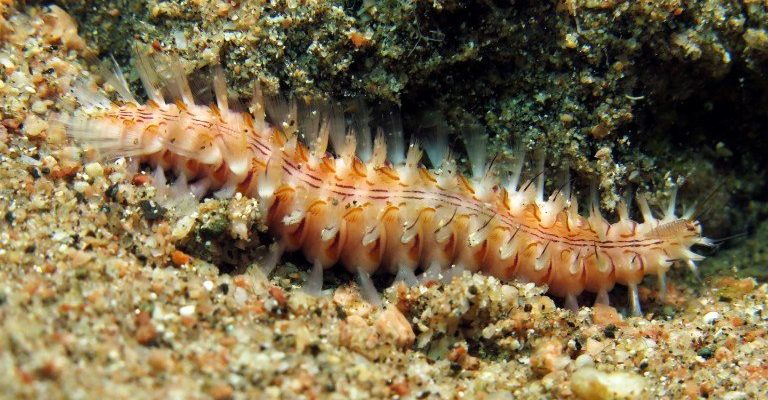
Now, you might be wondering why bristle worms even matter in your tank. In short, they play a crucial role in keeping your aquarium healthy. But if you don’t keep an eye on their growth or numbers, they can easily turn from beneficial to problematic. So, let’s dive into the world of bristle worms, discover their maximum size, and learn how to manage them in a home setup.
What Are Bristle Worms?
Bristle worms are marine worms that usually belong to the Polychaeta class. They’re often found in saltwater environments and can be incredibly helpful as scavengers. Think of them as the clean-up crew for your aquarium. They consume leftover food and decomposing matter, which helps keep your tank clean and healthy.
However, it’s important to note that not all bristle worms are created equal. Some can grow quite large and may become too much of a good thing. They can reproduce quickly, so if you aren’t careful, their population can explode in your tank. This is why understanding their maximum size is crucial for any aquarium hobbyist.
Typical Size of Bristle Worms
Generally speaking, bristle worms can vary significantly in size depending on the species. In home setups, you’ll often encounter species that can reach anywhere from a few inches to over a foot long. Yes, you read that right! Some bristle worms can grow to be about 12 inches long.
Most commonly, though, you’ll find them ranging from 2 to 8 inches. Here’s a breakdown of their sizes compared to common aquarium items:
- **Small species:** 2 to 4 inches, about the size of a standard pencil.
- **Medium species:** 5 to 8 inches, comparable to a TV remote control.
- **Large species:** 9 to 12 inches, roughly the length of a small banana.
So, knowing the potential size of these worms can help you manage your tank better.
Why Size Matters
You might be wondering why the size of bristle worms is such a big deal. Well, for one, larger bristle worms can consume more organic waste, which is great—until they start competing with your fish for food. You’ll want to strike a balance to ensure that your fish are still getting enough nutrition.
Moreover, large bristle worms can also become a bit aggressive if they feel threatened. While they typically won’t harm your fish, having a worm that’s over a foot long can be intimidating and could cause issues in a crowded tank. Being aware of their maximum potential size helps you keep the peace in your aquatic community.
Controlling Bristle Worm Populations
So, how do you keep these little critters in check? First, it’s all about managing your aquarium conditions. Here are some effective strategies:
- Overfeeding: Avoid giving your fish more food than they can consume. Leftover food is a buffet for bristle worms.
- Regular Cleaning: Vacuum your substrate regularly to minimize debris accumulation that could attract these worms.
- Introduce Predators: Certain fish, like wrasses, will eat bristle worms, helping to keep their numbers down.
By implementing these strategies, you can help keep bristle worm populations at a manageable level.
Identifying Different Types of Bristle Worms
You might also be curious about how to identify different types of bristle worms. This can be tricky since many species can look alike, especially when they’re small. However, here are a few pointers to help you out:
1. **Color:** Most bristle worms are reddish-brown or gray. If you spot a bright color, it might be a different species.
2. **Bristles:** Check out the bristles, or setae, on their body. Some species have thicker, more pronounced bristles, while others have finer ones.
3. **Habitat:** Different species prefer different habitats—some may hide in the substrate, while others love to cling to rocks.
Knowing these traits can help you better manage your tank’s ecosystem.
The Role of Bristle Worms in the Ecosystem
Despite their sometimes negative reputation, bristle worms play an important role in your aquarium. They help decompose organic matter and contribute to nutrient recycling within your tank. This not only keeps the environment clean but also supports the overall health of your aquatic life.
However, it’s essential to remember that balance is key. A few bristle worms can be beneficial, but too many can disrupt the ecosystem. This is why keeping their sizes and populations in check is necessary.
Understanding the **maximum size bristle worms** can reach in home setups is vital for maintaining a healthy aquarium. From their role in waste management to their potential size and population control, knowledge is your best tool. By keeping an eye on their growth and managing your tank properly, you can create a thriving aquatic environment for your fish and plants.
Bristle worms can certainly be a topic of interest for any aquarium keeper. By taking proactive steps, you can enjoy the benefits of these fascinating organisms while preventing them from getting out of control. So next time you see a little wriggly worm in your tank, remember: it’s not just a worm; it’s part of your underwater ecosystem!

